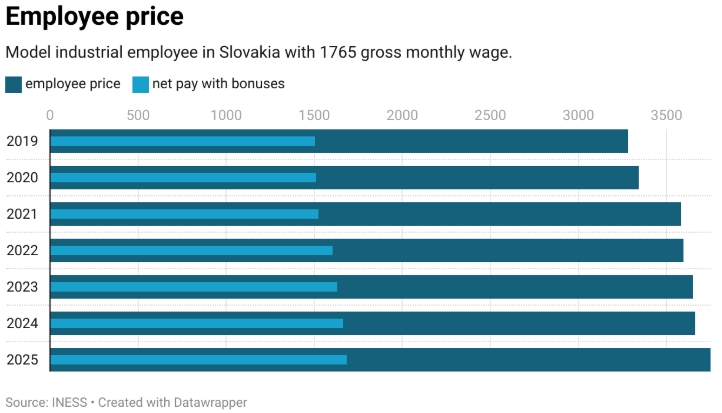The term “wage“ and its precise definition are crucial in public debates about labor markets, taxation, and social insurance. Wages also serve as a key indicator in international comparisons, guiding investors in evaluating where to locate their operations. However, confusion often arises from the distinction between gross wages and the arbitrary separation of “employee-paid” and “employer-paid” taxes and contributions. International statistics attempt to address this issue by using the concept of total wage cost.
Yet even the total wage cost fails to capture the full picture. It excludes mandatory employee-related expenses such as meal vouchers, statutory benefits, or legally required surcharges for night or holiday work. Most importantly, these conventional statistics are one-sided because they do not connect labor costs to actual labor output. For example, two employees with the same gross monthly salary may represent different costs to an employer if one receives five weeks of paid vacation and the other four.
To provide a more accurate measure, INESS developed the Employee Price Calculator in 2019. This comprehensive tool converts the employer’s financial outlay into a real cost per hour worked.
INESS has just released the 2025 version of the calculator. It is free to use and available in Slovak. This tool allows users to input 14 parameters that reflect wage and working conditions, including gross wage, 13th/14th salaries, bonuses, night and weekend shifts, holidays, and more. The main outputs are the total cost per hour worked.
Using the calculator, our model industrial employee, earning a gross monthly wage of €1,765 (the 2024 Slovak national average for the industrial sector), will cost employers €21.56 per hour worked in 2025. This equals €3,751 per standardized man-month, representing a 2.4% year-on-year cost increase, and a 14% increase since 2019. Notably, this cost growth is driven entirely by regulatory changes, as all wage and input parameters have remained unchanged in our calculations.
In 2022, the Employee Price Calculator became part of a broader international initiative. With the generous support of the Friedrich Naumann Foundation, INESS partnered with three other think tanks—IME (Bulgaria), FOR (Poland), and the Liberal Institute (Czechia)—to create national versions of the calculator.
Continue exploring:
Will Bread Baker Be Allowed to Work as Cakemaker? Lithuania Reforms Its Labor Migration Regulation




